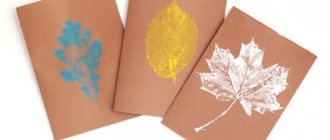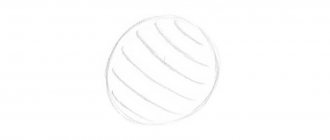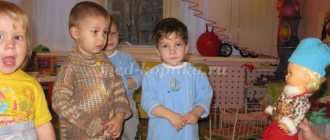On the topic: methodological developments, presentations and notes
Drawing with paints. (fingers).
Summary of an open lesson on drawing in a non-traditional way (poke drawing + emerging drawing) middle group “Animals of our zoo.” compiled by Kuznetsova Svetlana Vladimirovna Put.
The purpose of this lesson is to teach children to reflect the plot of an episode from a fairy tale, conveying its characteristic features: characters, their appearance, emotions, correspondence of the plot to the text of the fairy tale.
This material is aimed at developing fine motor skills of the fingers, creativity, and imagination.
Summary of GCD on modeling according to design in the middle group.
Goal: to study the appearance, character, behavior and habits of the fox. Objectives: to develop the ability to see and name parts of the animal’s body; introduce a new way of depicting the torso and head in f.
Notes for children with disabilities on hearing in the preparatory group.
Source
conclusions
The main task of a parent when teaching a child to draw is to instill an interest in creativity. To make your child love to draw, do not bother him with advice, appreciate his efforts. Give your child the opportunity to draw freely, do not hamper his imagination with ready-made templates, this is the only way he can fully develop his creative potential. Introduce your child to aesthetics, choose books with good quality illustrations, well-drawn cartoons, and, if possible, visit museums and exhibitions.
Summary of a comprehensive lesson for the middle group “Drawing by design. Drawing your favorite toy"
Liliana Migiyants
Summary of a comprehensive lesson for the middle group “Drawing by design. Drawing your favorite toy"
Summary of a comprehensive lesson for the middle group “
Drawing a favorite toy ” (
drawing according to plan ) Objectives: to introduce children to the names of toys ; learn to compare toys by size , determine and name the location of an object ( toy )
; Use the plural form correctly.
Types of children's activities: playful, cognitive - research, productive.
Equipment: pictures of toys , pictures of toys , with missing parts, “magic”
a bag of
toys (for example, a ball, a cube, a car, a doll, toys - animal figures (goat, cow, dog, chicken, horse, hedgehog, etc.), sheets of paper, colored pencils.
Free drawing for kids
With the help of drawing, children develop their creative and intellectual abilities. How to make development happen as quickly as possible? There are two opposing opinions on this matter. The first, and most common, point of view is that drawing in any form contributes to the creative development of children. Therefore, many parents buy their children all kinds of manuals with drawing tasks, coloring books, albums, as well as special drawing tools (for example, unusual brushes, stamps, etc.). This kind of “drawing” teaches the child not to put in too much effort to achieve a result and develops fine motor skills rather than creativity. The second point of view is the opposite of the first. Its supporters believe that there is no need to provide the child with ready-made templates for drawing and specially teach the child to draw different objects. To unleash a child’s creative potential and develop his intellect, you don’t need anything extra. Creative thinking develops when the child himself comes up with what to draw. Paper, brushes and paints are the best tool for developing creativity. This approach promotes “free” drawing.
Don’t rush to expect artistic masterpieces from your child in early childhood. Before the child begins to produce realistic images, the baby's drawings will go through the stages of strokes, scribbles and schematic images.
In preschool age, it is very important to provide the child with creative freedom. Let your child figure out how best to draw the sun or a house. The theory of free drawing says that it is necessary to protect the child as much as possible from patterns in drawing. Since such standards surround us everywhere in everyday life, we need to try to ensure that the patterns that a child encounters (in books, TV, in classes) are of high quality.
Stages of development of children's drawings
| Age | Contents of drawings |
| Up to 1.5 years | Stroke stage. At this age, children enjoy the colorful marks they can leave on paper. Provide your child with as many creative materials as possible so he can express himself. |
| 1.5 – 3.5 years | Doodle stage. The drawings made by children at this age do not differ in appearance from the drawings of the previous stage, but the child already puts his own meaning into them, wanting to depict something specific. |
| 3.5 – 8 years | Schematic stage. At this age, children usually begin to draw familiar houses, flowers, and the sun. The child depicts only the important details of the object, without taking into account the proportions. |
| 8 – 10 years | Stage of plausible images. Children at this age try to depict the object as accurately as possible, details are drawn, proportions are taken into account. |
| After 10 years | Correct images. The drawings become three-dimensional and realistic. |
Experts separately highlight the features of children’s depiction of humans:
| Age | Features of the image of a person |
| 4 years | The body is usually round or oval, there is no neck. The proportions are not respected. |
| 5 years | Gender differences appear (girls and boys are depicted differently), details (ears, hair, clothes). |
| 6 years | Drawing small details, maintaining proportions. The neck is shown. |
| 7 years | The drawing becomes more realistic. The face can be drawn not only from the front, but also from the profile. |
| 8 years | The line of the neck, shoulders and arms is continuous. |
| 9 years | A person can be depicted in various poses, and movement is captured. |
| 10-11 years | The desire to create a three-dimensional image. |






